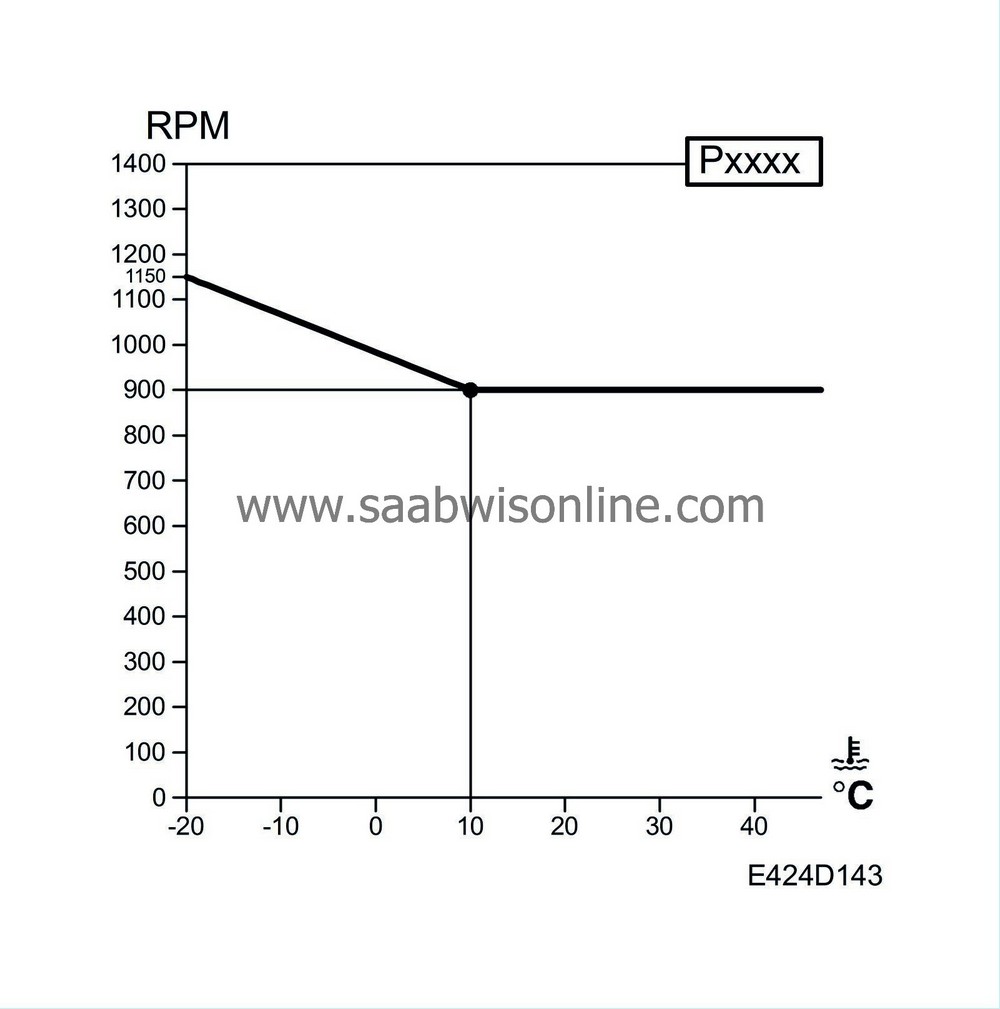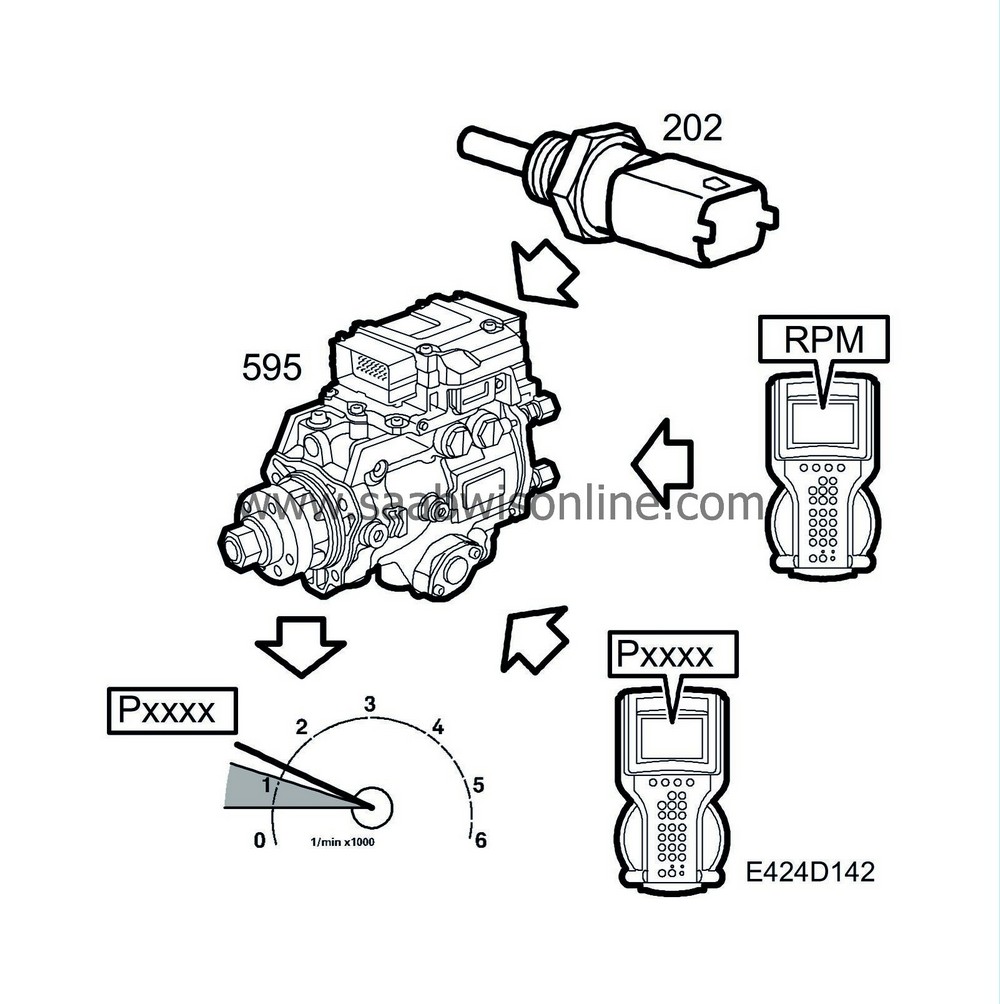PRE-RELEASE
Idle speed control
| Idle speed control |

Idle speed control consists of two sub-functions:
| - |
Desired value, idling speed
|
|
| - |
Idle speed control
|
|
| Desired value, idling speed |
The idling speed that is to apply is chosen based on coolant temperature, intake air temperature, whether the control module has diagnostic communication or if there is a system fault (DTC).
Based on coolant temperature and intake air temperature, idle can vary from approx. 1150 rpm with a cold engine to 900 rpm with a warm engine.
The function ACTIVATE in the diagnostic instrument can be used to temporarily increase or decrease idling speed. It can be increased to max. 2000 rpm and decreased to min. 700 rpm. When the ACTIVATE function is interrupted, the engine resumes its previously programmed value. If a system fault occurs, idling speed is set to 1400 rpm. The diagnostic instrument can be used to program in a more permanent change to idling speed. The possible change is 100 rpm and this is carried out using the ADJUST function. If the diagnostic instrument is used to adjust idle, the calculated idling speed is increased or decreased by the adjusted value and the new idling speed is sent on for idle control.
Desired value, idling speed is synchronous, that is to say calculations are carried out at a specific time interval.
| Idle speed control |
In the sub-function idle speed control, the order from "desired value, idling speed" is carried out.
Idle speed control comprises a number of different internal calculations that are synchronised with engine speed. This means that each new fuel quantity calculation is governed by engine speed. There is a new calculation for each power stroke to calculate the injection quantity that fits the desired idling speed.
The fuel quantity from idle speed control goes on in the control module's decision chain.



